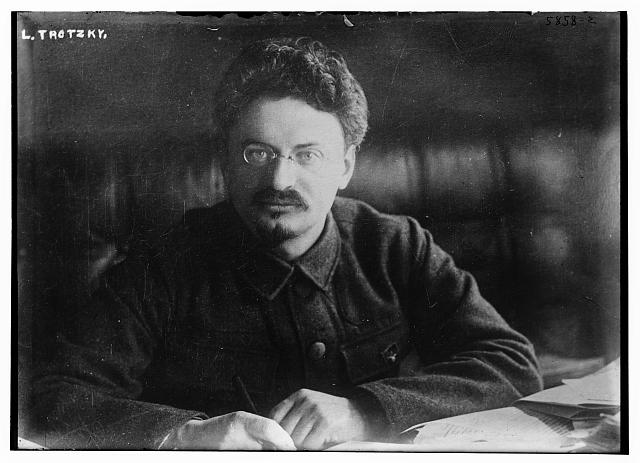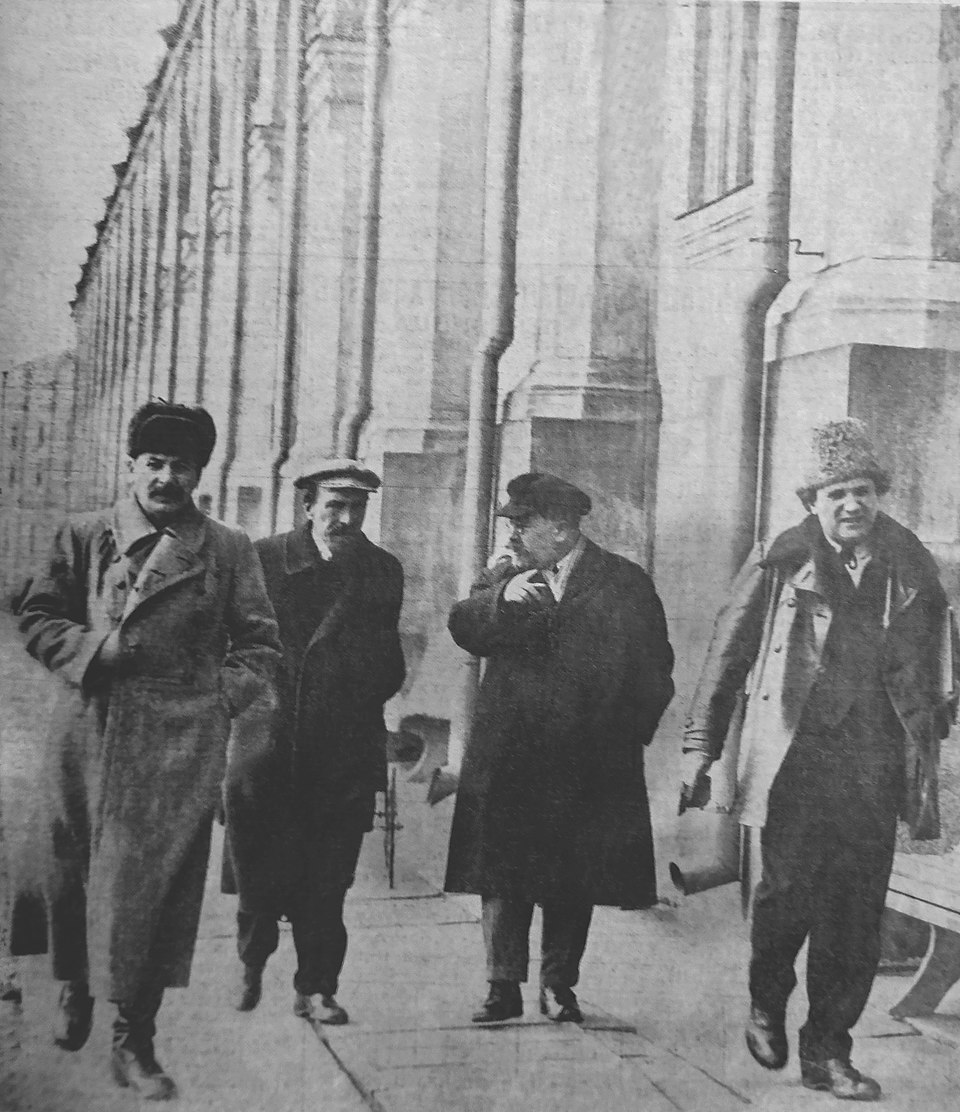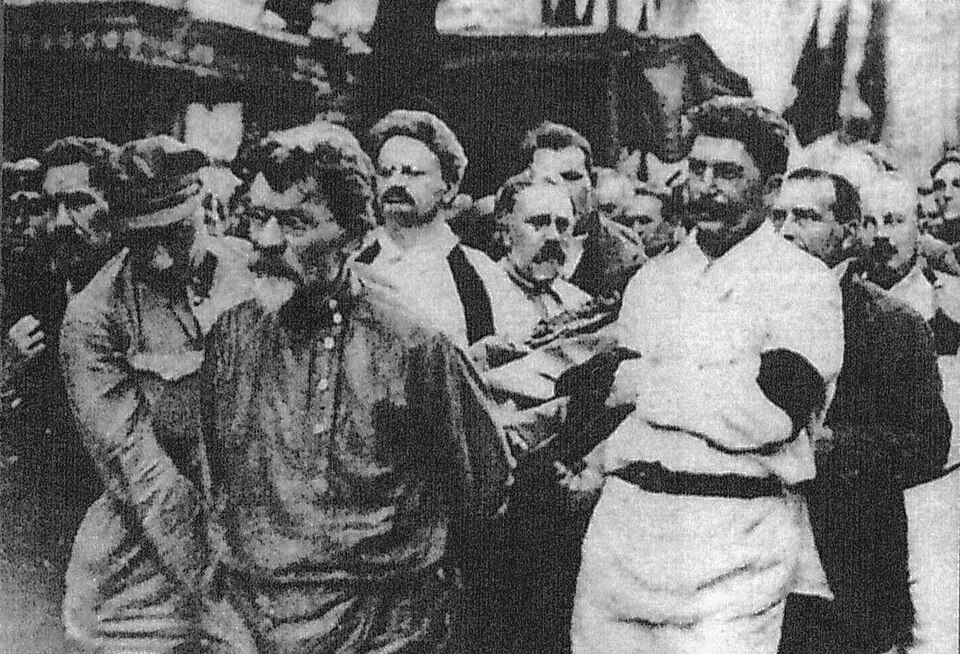OCR Specification focus:
‘Character and abilities of Stalin; rivalries and divisions in the Bolshevik party, Trotsky, Bukharin, Kamenev, Zinoviev.’
Stalin’s rise within the Bolshevik Party owed much to his cautious pragmatism, shrewd manipulation of rivals, and ability to exploit divisions in revolutionary politics.
Stalin’s Character and Abilities
Background and Personal Traits
Joseph Stalin, born in Georgia in 1878, lacked the intellectual brilliance of some Bolshevik peers but compensated with resilience and organisational skill. Unlike Lenin, who was charismatic and ideological, Stalin was pragmatic, secretive, and unassuming in appearance. His ability to remain underestimated by colleagues became a political advantage.
Pragmatism: A practical approach to problems and politics, prioritising effectiveness over strict ideology.
Administrative Strengths
Stalin’s early posts, including Commissar for Nationalities and later General Secretary of the Communist Party (1922), allowed him to build networks of loyalty. Control of party membership lists, appointments, and promotions gave him the power to reward allies and sideline opponents.
His reputation as a “grey blur” (seemingly dull and inconspicuous) masked the fact that he carefully constructed a web of influence across the Party hierarchy. Unlike more flamboyant figures, Stalin relied on quiet consolidation.
Ideological Positioning
While others debated theory, Stalin positioned himself flexibly:
He initially supported ‘Socialism in One Country’, appealing to Party members wary of constant foreign revolution.
He shifted alliances according to necessity, demonstrating adaptability over rigid ideology.
This flexibility, combined with a readiness to compromise, gave Stalin resilience against political setbacks.
Rivalries and Divisions within the Bolshevik Party
The Aftermath of Lenin’s Death
Lenin’s declining health from 1922 created a power vacuum. His Testament (1922–23) warned of Stalin’s rudeness and recommended his removal, but divisions in the Party leadership ensured this was suppressed. The absence of a clear successor enabled factional struggles, which Stalin navigated effectively.
Trotsky
Leon Trotsky, widely regarded as Lenin’s natural successor, was charismatic, an outstanding orator, and organiser of the Red Army. However, his arrogance alienated colleagues, and his Jewish background made him vulnerable in an anti-Semitic environment. Stalin exploited Trotsky’s hesitancy and ensured his isolation by:
Attacking his theory of Permanent Revolution, portraying it as unrealistic.
Undermining him during Lenin’s funeral by giving misleading advice so that Trotsky failed to attend, damaging his public standing.
Aligning temporarily with Zinoviev and Kamenev to block Trotsky.
Trotsky’s intellectual authority, oratory and advocacy of permanent revolution made him Stalin’s most formidable early rival.

Leon Trotsky, c.1920–25. His reputation as Lenin’s potential successor stemmed from his leadership of the Red Army and his theory of permanent revolution. Source
Kamenev and Zinoviev
Both Grigory Zinoviev and Lev Kamenev were early Bolsheviks and close allies of Lenin. They initially formed a Triumvirate with Stalin against Trotsky. However, their decision to oppose Lenin’s April Theses in 1917 undermined their revolutionary credibility.
In 1924–25, Stalin joined Zinoviev and Kamenev in a ‘Triumvirate’ (or ‘Troika’) to isolate Trotsky within the party.

Stalin with Rykov, Kamenev, and Zinoviev at the Kremlin, April 1925. This group formed the Triumvirate used to marginalise Trotsky during the mid-1920s. Source
They underestimated Stalin, seeing him as a secondary figure.
By 1925–26, when they opposed Stalin’s economic policies, he had already outmanoeuvred them.
Both were later expelled from the Party and eventually executed during the Great Purges.
Bukharin
Nikolai Bukharin represented the more moderate right-wing of the Party. As editor of Pravda, he was highly influential, and he supported the NEP (New Economic Policy), which favoured gradual economic development and concessions to the peasantry.
Stalin initially allied with Bukharin against the left (Trotsky, Zinoviev, Kamenev). Once Trotsky was marginalised, Stalin turned on Bukharin, denouncing the NEP as insufficient for rapid industrialisation. By the late 1920s, Bukharin was isolated, and Stalin had secured dominance.
Factional Divisions
The Bolshevik Party split into left, right, and centre factions:
Left Opposition (Trotsky, Zinoviev, Kamenev): Wanted rapid industrialisation and end of NEP.
Right Opposition (Bukharin, Rykov, Tomsky): Favoured continuation of NEP and gradual development.
Centre (Stalin): Shifted between sides, using alliances tactically until he emerged supreme.
Faction: A group within a political party that shares a particular viewpoint or policy agenda, often competing with other internal groups.
By playing factions against one another, Stalin ensured no unified opposition could remove him.
Stalin’s Tactical Skill in Exploiting Divisions
Control of the Party Machinery
As General Secretary, Stalin appointed loyal officials at all levels. This ‘patronage system’ created a dependable base of support. His rivals, though often intellectually superior, lacked comparable organisational reach.
Manipulation of Ideological Debates
Stalin used ideology strategically:
Against Trotsky, he promoted Socialism in One Country, presenting it as patriotic.
Against Bukharin, he shifted to emphasise rapid industrialisation and collectivisation, appealing to Party radicals.
Use of Propaganda and Image
Although not yet the full Cult of Personality, Stalin cultivated an image as a loyal, modest servant of Lenin’s cause. He was portrayed as the ‘man of the people’, contrasting with Trotsky’s elitist reputation.
Timing and Patience
Stalin rarely attacked directly until opponents were weakened. He avoided open confrontation until victory was assured, allowing him to strike decisively when divisions peaked.
By 1926, divisions hardened as Trotsky, Zinoviev and Kamenev formed the United Opposition against Stalin’s growing control.

Funeral of Felix Dzerzhinsky, 22 July 1926: Stalin, Trotsky, Kamenev, Bukharin, and others carry the casket. The scene highlights the proximity and rivalry of the Party’s factions. Source
Political Position by Late 1920s
By the end of the 1920s, Stalin had eliminated or sidelined his main rivals:
Trotsky exiled.
Zinoviev and Kamenev politically destroyed and later executed.
Bukharin removed from influence.
Stalin’s blend of administrative control, factional manoeuvring, and ideological adaptability enabled his consolidation of power, transforming him from an underestimated administrator into the undisputed leader of the Soviet Union.
FAQ
Stalin’s reputation as the “grey blur” meant he appeared dull, cautious, and less threatening compared to Trotsky’s charisma or Bukharin’s popularity.
His modest presentation and lack of flamboyance allowed rivals to overlook the influence he was building through administrative control and careful political manoeuvring.
Party congresses allowed Stalin to use his organisational skills to dominate voting outcomes.
As General Secretary, he controlled delegate selection, ensuring loyal supporters attended.
By 1925, this helped him secure majorities against the Left Opposition.
Congresses also gave Stalin a platform to present himself as Lenin’s faithful successor, strengthening his legitimacy.
Lenin’s Testament criticised several leaders, including Trotsky, Kamenev, and Zinoviev, but it singled out Stalin’s rudeness and suggested his removal.
The collective decision to suppress the Testament meant no single figure emerged as Lenin’s clear successor, which benefited Stalin. His rivals’ unwillingness to push for its publication avoided mutual damage but also left Stalin in place.
Bukharin was seen as the “darling of the Party” due to his warm personality and theoretical skill, especially in Marxist economics.
Unlike Trotsky, who was divisive, or Zinoviev and Kamenev, who had made tactical mistakes, Bukharin was widely liked. However, his association with the NEP tied him to policies increasingly seen as inadequate for rapid Soviet modernisation, which weakened him against Stalin’s more radical stance.
After years of civil war and foreign intervention, many Bolsheviks and Soviet citizens were weary of international conflict.
‘Socialism in One Country’ offered stability and national pride, focusing on internal development.
Trotsky’s vision of spreading revolution abroad seemed unrealistic and risky, especially given Russia’s economic weakness.
Stalin’s message resonated with Party members who valued security over ideological adventure.
Practice Questions
Question 1 (2 marks)
Name two members of the Bolshevik Triumvirate (also known as the Troika) formed with Stalin in 1924–25 to isolate Trotsky.
Mark Scheme
Award 1 mark for each correct name, up to a maximum of 2 marks.
Correct answers: Zinoviev, Kamenev.
Question 2 (6 marks)
Explain how Stalin was able to outmanoeuvre his rivals in the Bolshevik Party between 1924 and 1929.
Mark Scheme
Level 1 (1–2 marks): Simple or general statements, e.g. “Stalin defeated his rivals by being clever” or “He had power as General Secretary.” Limited detail.
Level 2 (3–4 marks): Some explanation of specific factors, e.g. reference to control of party membership lists, temporary alliances with Kamenev/Zinoviev against Trotsky, then later with Bukharin. Limited range or depth.
Level 3 (5–6 marks): Developed explanation covering a range of factors. Examples include:
Stalin’s use of his role as General Secretary to appoint loyal supporters.
Alliances of convenience (with Zinoviev and Kamenev against Trotsky; with Bukharin against the left).
Flexibility in ideology (support for “Socialism in One Country” against Trotsky’s Permanent Revolution, later shift to rapid industrialisation against Bukharin).
Exploitation of rivals’ weaknesses (Trotsky’s absence from Lenin’s funeral, Zinoviev/Kamenev’s loss of credibility, Bukharin’s reliance on the unpopular NEP).
Maximum 6 marks awarded for answers that provide a well-supported and detailed explanation across more than one factor.

